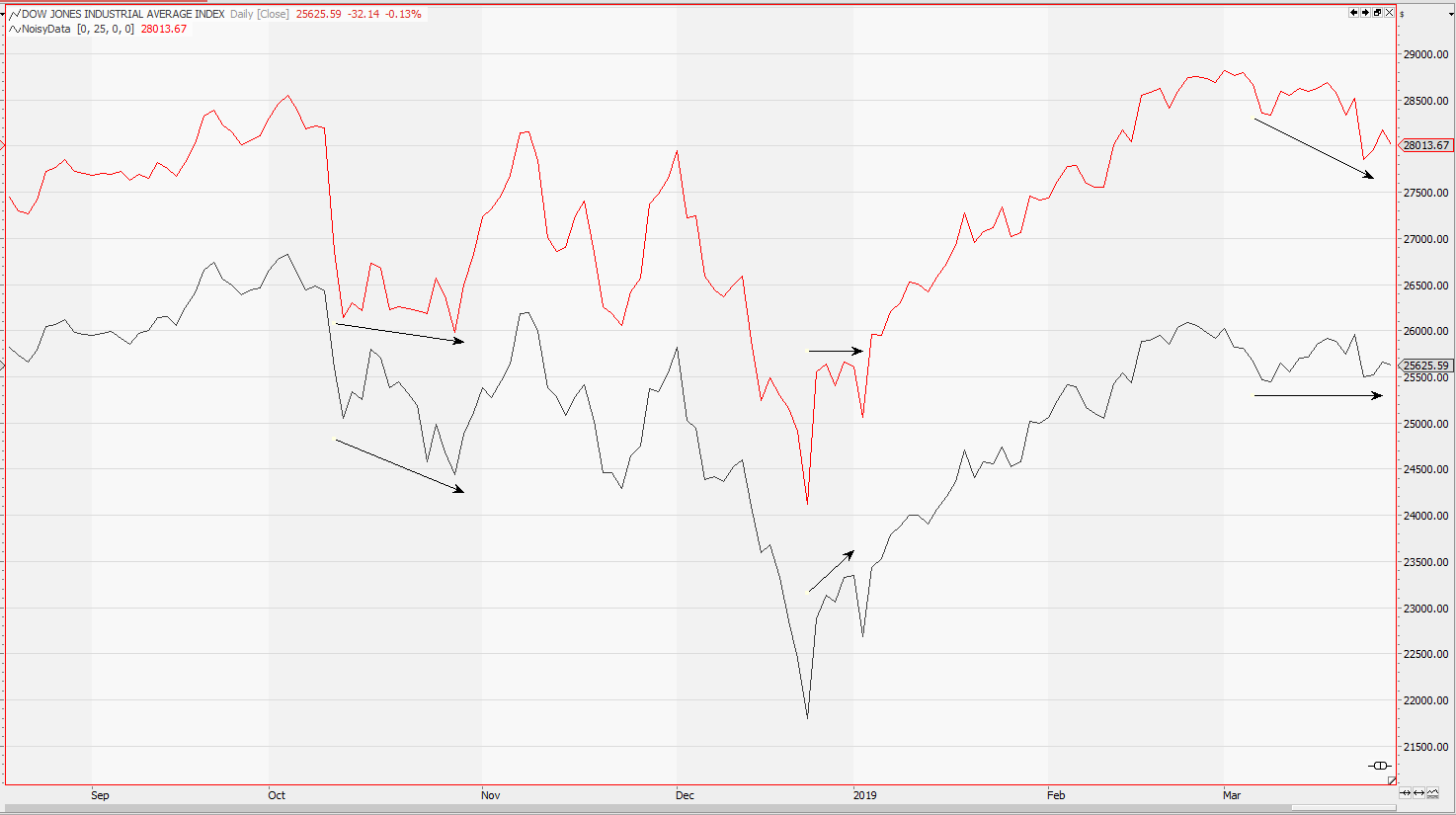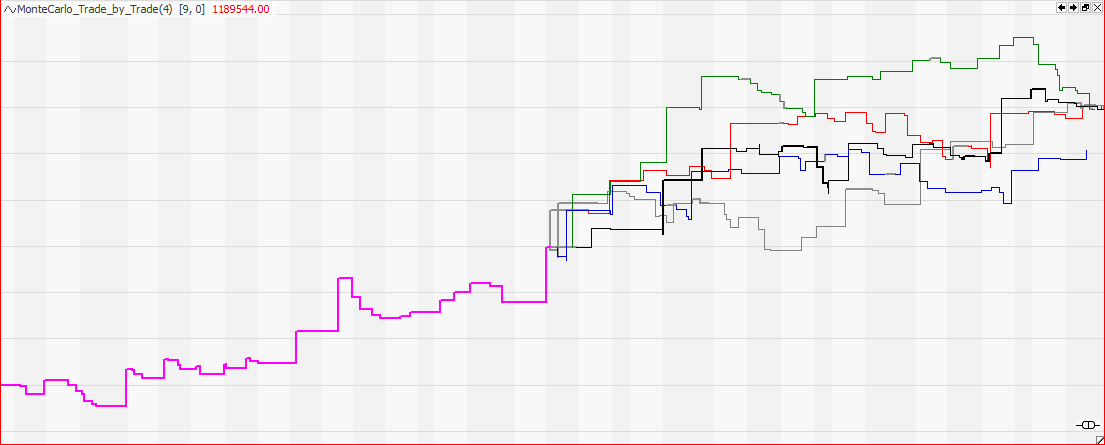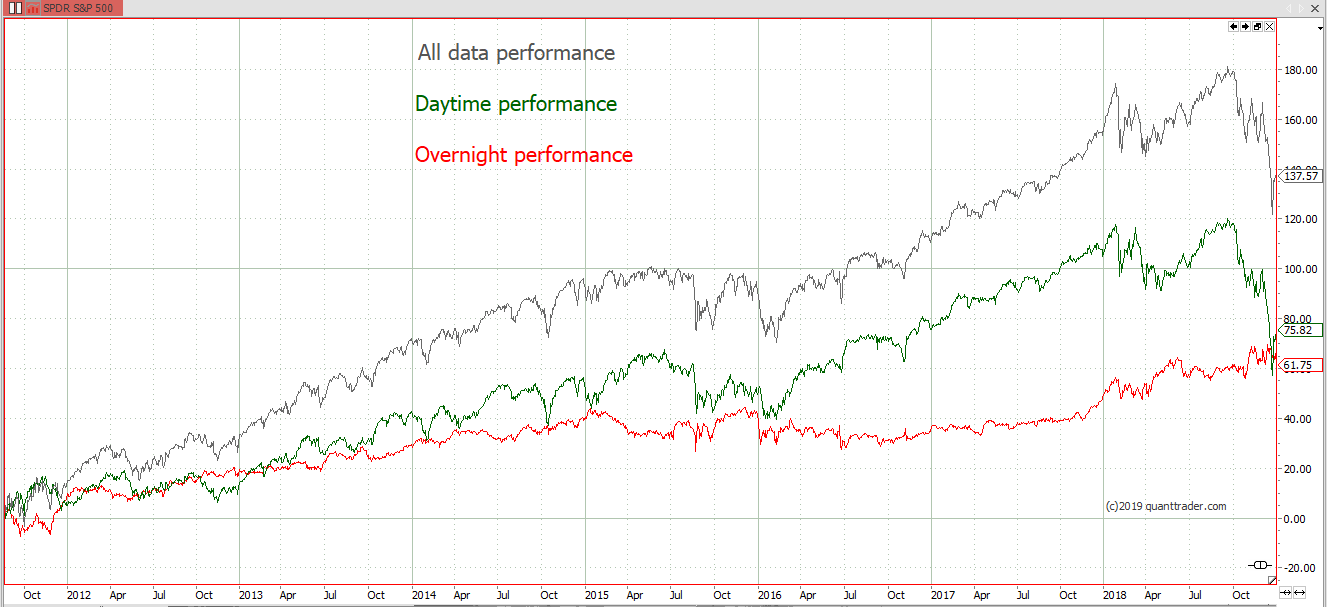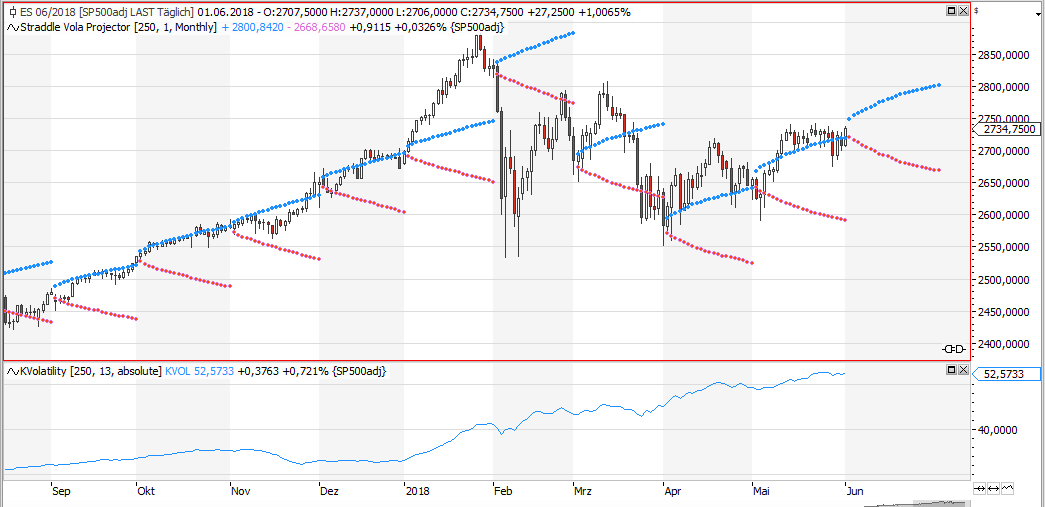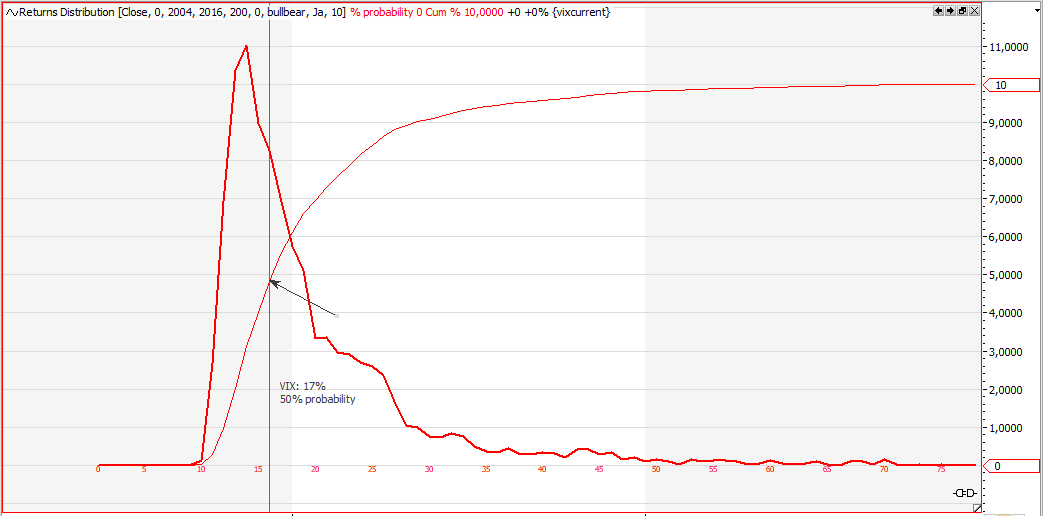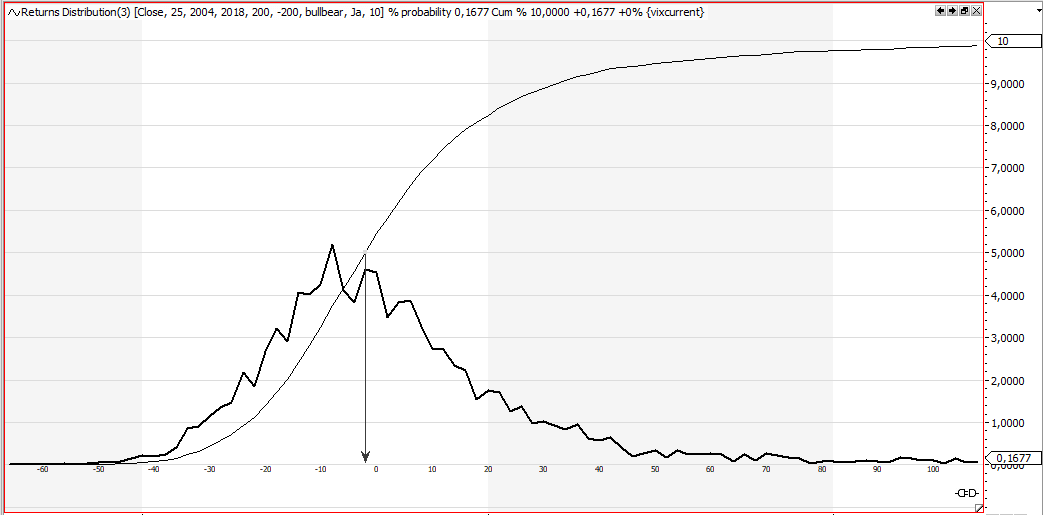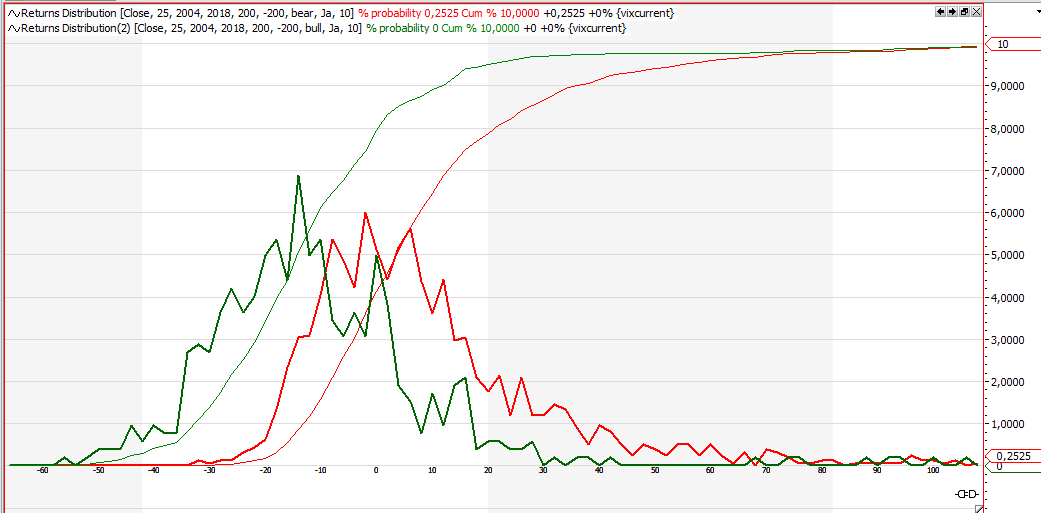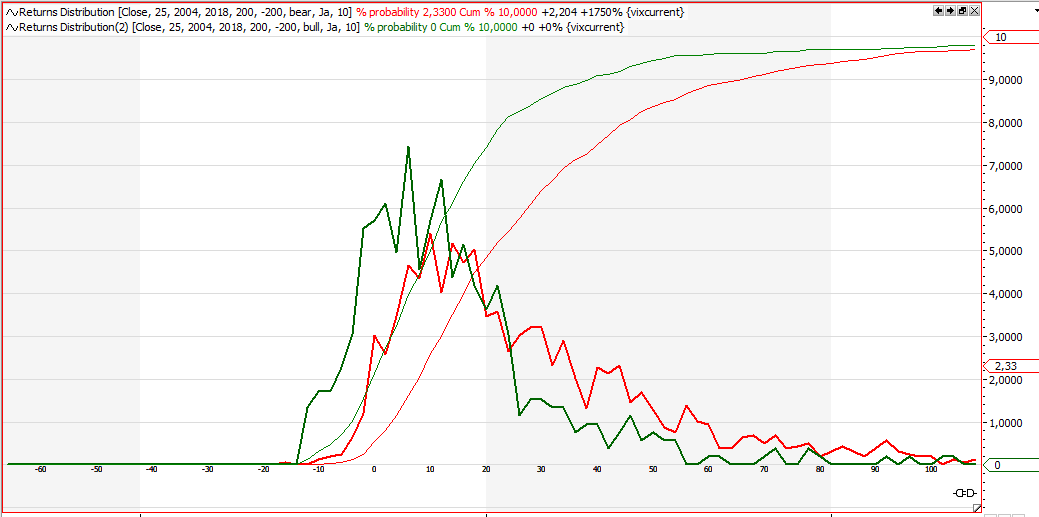As an option seller you want the market to stay within the range prognosticated by implied volatility. But what is the historic probability that markets behave as expected? And what other analysis could be done to enhance your chances and find the periods when it is wise to sell an at the money straddle? This article will try to give some answers to this question.
volatility
Daily Extremes – Significance of time
Analysing at which time daily market extremes are established shows the significance of the first and last hours of market action. See how different markets show different behaviour and see what can be learned from this analysis.
Probability of Extremes
A day of trading usually starts with a lot of fantasies for the future, then we try to survive the day and end it with a lot of hope for tomorrow. This psychological pattern can also be shown when analysing intraday market data. A high level of fantasies usually leads to a strong market movement, and thus market extremes can often be seen near the beginning or the end of the trading session. Continue reading
Noisy Data strategy testing
Algorithmic trading adds noise to the markets we have known. So why not add some noise to your historic market data? This way you can check if your algorithmic trading strategies are fit for the future. Learn how to generate noisy data and how to test your strategies for stability in a noisy market.
Synthetic market data?
Monte Carlo Simulation of strategy returns
Monte Carlo Simulation uses the historic returns of your trading strategy to generate scenarios for future strategy returns. It provides a visual approach to volatility and can overcome limitations of other statistical methods.
Monte Carlo Simulation
Overnight vs Daytime Performance & Volatility
Analysing the market performance of the day session vs. the overnight movement reveals some interesting facts.
Daytime vs. Overnight Performance
Bullish? Buy stock or sell put option?
So you are bullish on a specific stock, but you also have realised that timing is major problem? So what would be the best strategy to implement your bullish opinion but avoid the problems of any timing strategy?
Selling a put option might be the answer. Continue reading
An Algorithmic Stock Picking Portfolio
In this article I will discuss a simple algorithmic stock picking approach based on momentum and volatility. The goal will be to generate excess returns versus a capital weighted stock basket. Continue reading
The average move of a market
Markets have a high degree of randomness (and madness), but there are some things which hardly change over time. One is the width of an average market move before a counter-move can be observed. Continue reading
Market crash or market correction?
Over the last days and weeks some traders have been worried if the currently ongoing correction in the markets will evolve into a crash, or if it is just a normal correction. Continue reading
Bollingerband: The search for volatility
Usually it makes no sense to fight against normal distribution. But there are setups which have got a high probability of unexpected behaviour. Volatility can be the key to future market movements. Continue reading
Tradesignal Implied Volatility and IV Percentile Scanner
Implied volatility data is key in options trading. This article shows how to access free volatility data in the Tradesignal software suite. Continue reading
IV Percentile – when to sell volatility
Volatility trading: when to buy and when to sell volatility Continue reading
Implied vs. Realized Volatility for NASDAQ100 stocks
(1) You shall only trade when the chances are on your side Continue reading
Distribution of Returns
“Tomorrow never happens. It’s all the same fucking day, man. ” Janis Joplin Continue reading
Bet on Bollinger
Ever since John Bollinger introduced his Bollinger Bands in the early 1980s the bands have been a favourite indicator to all technical trades. This article is about the prediction capabilities of Bollinger bands. Continue reading
Backtesting Market Volatility
If you want to trade volatility, you can place a bet on the option market. Just buy an at the money put and call, and at expiry day you will either win or lose, depending on the actual market move since you bought the straddle and the price you paid for the straddle. To put it simple, if the market moves more than you paid for the two options you will win, otherwise you will lose. This article is about a back test of volatility. Continue reading
Demystifying the 200 day average
The 200 day average is considered as a key indicator in everyday technical analysis. It tells us if markets are bullish or bearish. But can this claim be proved statistically, or is it just an urban legend handed down from one generation of technical analysts to the next? Let’s find out and demystify the 200 day moving average. Continue reading
Money for nothing
We already had a post regarding the mean reverting tendency of Volatility, now it`s time to make some money using this information. Continue reading
KVOL Volatility part 2
How to calculate volatility based on the expected return of a straddle strategy has been shown in part 1 of fair bet volatility KVOL.
Using and Displaying K-Volatility:
KVOL uses the given amount of historic returns to calculate an expected value of an at the money put and call option. The sum of these prices are the historic fair value for implied volatility. It can be used to compare current market implied volatility to historic fair values.
Beside calculating KVOL for a specific return period it can also be used to show it as a projection indicator on the chart.
The example on the chart gives such an expectation channel for the s&P500 at the beginning of each month. The 250 days before are used to calculate KVOL. The line underneath the chart is running KVOL for 13 trading days.
Simplified trading:
to win, with higher volatility expected: you would have bought a straddle at the beginning of the month, expiring at the end of the month. You should not have paid more than a KVOL for 25 bars (working days to expiry) would have suggested. You win if the chart is outside of the projection at the end of the month.
The shown example uses the 250 daily bars before the beginning of the month to calculate the returns and the price of KVOL. The projected lines represent the winning boundaries of the straddle at expiry.
Statistics of VIX
The CBOE volatility index VIX measures the market’s expectation of future volatility. This article will show you some key statistics of VIX and help you to decide if it is better to buy or to sell volatility.
Statistics of VIX
The spikes to the top and the long phases of relatively low volatility are reflected in a left-leaning distribution diagram and a long tail towards the higher levels. The median value is 17%, meaning 50% of the prices are above (below) this level.
The next chart shows the distribution of returns over 25 trading days. The median price movement being slightly shifted to the negative area shows the mean reverting characteristics of volatility.
Buy or sell volatility?
Analysing the level of VIX and the returns afterwards yields an even more interesting picture:
The green line gives the 25 bar percentage returns of VIX, with VIX noting above 25, the red line gives the returns with VIX below 15. Observe the median of the two lines:
The median 25 bar return with VIX above 25 (green) is around -15%, only 20% of the returns are positive when VIX is currently above 25. Sell volatility.
The median returns with VIX currently below 15 (red) is above 0% and with a fat tail to positive returns. Buy volatility. (data from 2004-2018)
Adverse movement of VIX
The above chart suggests that going short on volatility, if VIX is above 25, seems to be a good idea. But it is not without risk. The chart below shows what can go wrong during the next 25 days. The distribution diagram gives the maximum adverse movement of the VIX, with VIX currently trading above 25.
The green line, VIX currently above 25, shows a +10% median maximum up movement over the next 25 days. So do not expect a short vola position to be without risk. Some adverse movement has to be expected.
On the other side, the distribution of the maximum loss of the VIX during a 25 day period shows a median of below -20%. This represents the profit potential of a short volatility position.
Conclusion of VIX statistics:
If you plan to short volatility wait until VIX is trading above 25. If you want to buy volatility, do so if VIX is trading below 15.
The analysis has been done using the tradesignal software suite.


